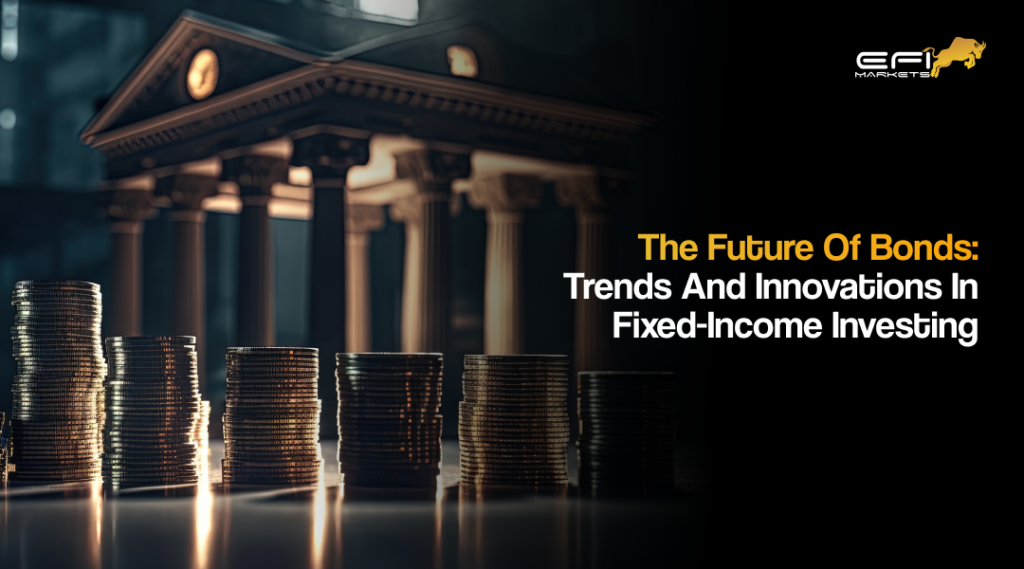
Introduction:
In the dynamic landscape of financial markets, fixed-income investing has long been a cornerstone for investors seeking stability and income. Traditionally, bonds have been considered a safe haven, providing a reliable source of returns. However, as we navigate through the ever-evolving world of finance, the future of bonds is undergoing a transformation marked by innovative trends. In this blog, we will explore the exciting developments shaping the future of fixed-income investing.
Green Bonds and Sustainable Investing:
One of the most significant shifts in fixed-income investing is the rise of green bonds and sustainable investing. Investors are increasingly recognizing the importance of environmental, social, and governance (ESG) factors in their portfolios. Green bonds, specifically earmarked for environmentally friendly projects, have gained popularity, reflecting a growing commitment to sustainable finance. This trend not only aligns with ethical considerations but also opens up new avenues for investors to diversify their fixed-income portfolios.
Digital Bonds and Blockchain Technology:
The integration of blockchain technology is another notable trend in the fixed-income market. The use of distributed ledger technology promises increased transparency, reduced counterparty risk, and enhanced efficiency in bond trading and settlement. Digital bonds issued and traded on blockchain platforms have the potential to streamline processes, reduce costs, and democratize access to fixed-income securities. This innovation is reshaping the traditional infrastructure of bond markets, paving the way for a more inclusive and technologically advanced future.
Inflation-Linked Bonds in an Uncertain Economic Environment:
With the global economic landscape experiencing periods of uncertainty, investors are showing heightened interest in inflation-linked bonds. These securities adjust their interest payments and principal value based on changes in inflation, providing a hedge against rising prices. In an environment where inflationary concerns are at the forefront, inflation-linked bonds offer a strategic component for investors aiming to protect their fixed-income portfolios from the eroding effects of inflation.
Artificial Intelligence and Data Analytics:
The application of artificial intelligence (AI) and data analytics is transforming how fixed-income investors analyze and manage risks. AI-driven algorithms can process vast amounts of data in real-time, helping investors make more informed decisions. These technologies enable predictive analytics, identifying potential credit risks and market trends before they become apparent through traditional methods. As AI continues to evolve, its integration into fixed-income investing will likely become more sophisticated, offering investors valuable insights and competitive advantages.
Diversification through Emerging Market Bonds:
Investors seeking enhanced returns are increasingly turning their attention to emerging market bonds. As these economies grow and develop, their fixed-income markets become more attractive. Investing in emerging market bonds can offer higher yields compared to traditional developed markets, albeit with higher risks. The ongoing globalization of financial markets and improved accessibility to emerging market debt contribute to the growing popularity of these bonds in diversified fixed-income portfolios.
Conclusion:
The future of bonds is unfolding with exciting trends and innovations that promise to reshape the landscape of fixed-income investing. From the rise of sustainable finance and digital bonds to the integration of AI and the exploration of emerging market opportunities, investors are navigating new avenues to optimize their fixed-income portfolios. As we embrace these changes, it is essential for investors to stay informed and adapt to the evolving dynamics of the fixed-income market, ensuring a resilient and forward-looking approach to investment strategies.
